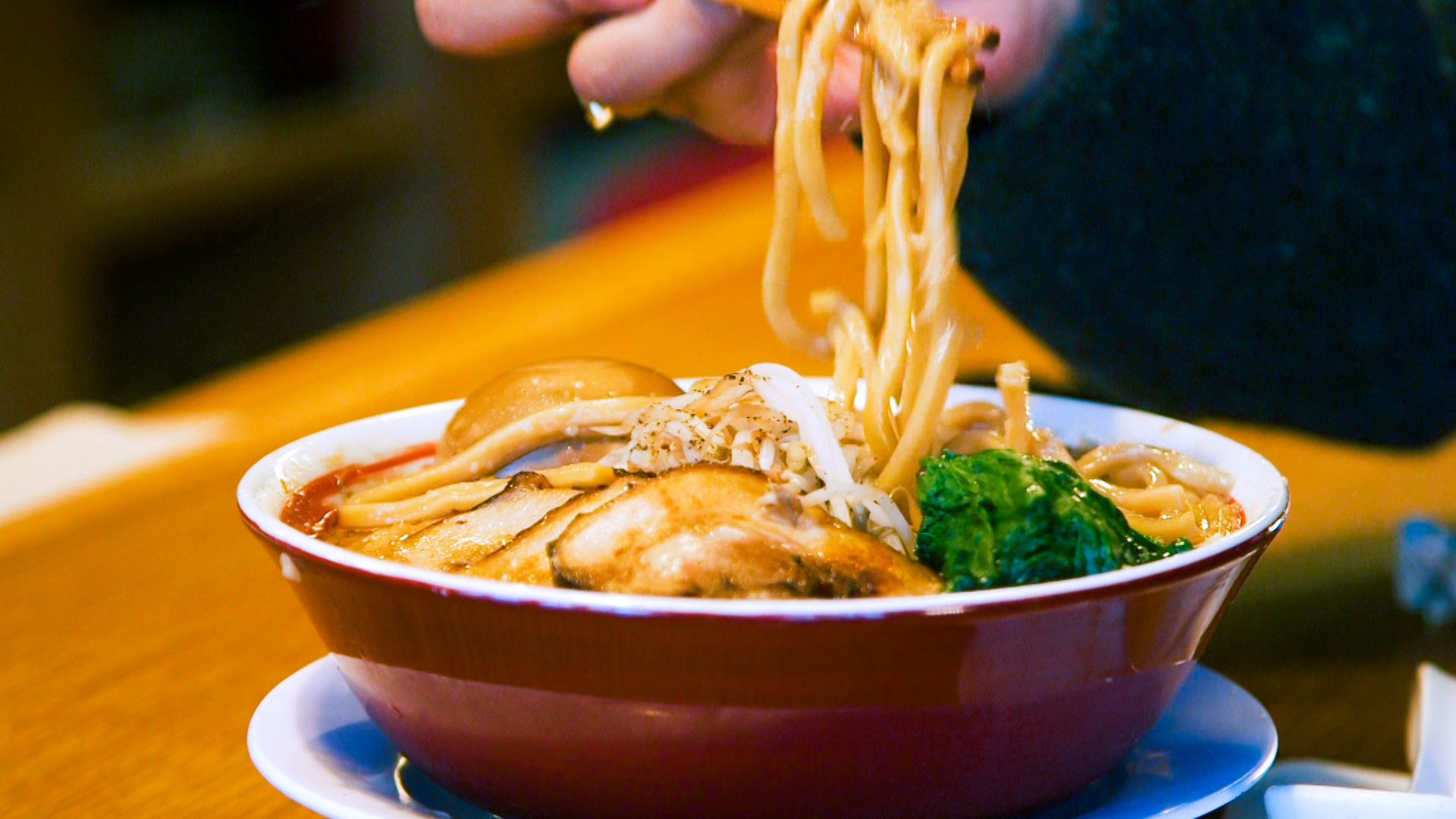- Noodles are enjoyed in different cultures around the globe and have a variety of origin stories.
- Japan is known for ramen, which surged in popularity after World War II popularized wheat.
- Spaghetti and meatballs are more popular in the United States than Italy and was brought to the country by Italian immigrants.
- Visit Insider’s homepage for more stories.
Following is a transcript of the video.
Narrator: Noodles are eaten all over the world. Sometimes they’re sweet, sometimes spicy. We take you around the globe to experience how 16 places eat noodles. Noodles have been around for centuries, and a lot of people might associate their origins with Chinese or Italian dishes, but they’ve made their mark in tons of countries. Dishes like spaghetti and meatballs or ramen have a history that you might not know about. Here’s how noodles are eaten in 16 places around the world.
China is home to a variety of cuisines and noodles, but a particularly popular noodle dish is zhajiangmian. The name translates to “fried sauce noodles.” Wheat noodles are mixed with a sauce made by stir-frying ground pork or beef with fermented soybean paste. It’s usually served with fresh or pickled vegetables.
Japchae is a popular Korean noodle dish. It was invented in the 17th century but was first made without noodles or meat. The legend is that King Gwanghae was holding a palace banquet and Yi Chung served him the dish. The king loved it so much that he promoted Chung to secretary of treasury. Today, the dish is made with glass noodles made from sweet potato starch and served with vegetables and seasoned meat. The dish is especially popular during Korean holidays.
Italy has hundreds of pasta dishes, but one of its ancient classics is cacio e pepe. It means "cheese and pepper." Legend has it that in Roman times, shepherds would take their sheep to graze in the mountains. The shepherds would bring homemade pasta with them and cook it, then combine it with the cheese they made out of the milk they collected from their sheep. The dish consists of black pepper, grated pecorino Romano cheese, and spaghetti. It's simple but delicious.
Did you know spaghetti and meatballs were actually created in the United States, not Italy? But it's associated with Italy because it was created by Italian immigrants. 4 million Italians immigrated to the United States between 1880 and 1920. Most came from southern Italy and went from spending 75% of their income on food in Italy to 25% in America. With a boost in income, more meat was consumed in larger quantities, which in turn gave us meatballs. Canned tomatoes and spaghetti were part of the few items available at grocery stores, and hence the dish was born.
This is another noodle dish that didn't exist until immigrants created it. Hawaii has a rich mix of cultures that has resulted in a distinct cuisine. Saimin is Hawaii's version of ramen, inspired by a blend of Japanese and Chinese culture. It's made up of thicker, chewier noodles that are cooked in a dashi broth and topped with bok choy, mushrooms, ginger, char siu, and Spam.
This Afghan dish calls for thick noodles and legumes in a tomato-based broth with spices like turmeric. It contains chili, beef, and loads of vegetables and gets topped with yogurt. This hearty meal from Egypt is full of different ingredients. It was created around the 1800s and made for an affordable vegan dish families could make with their remaining ingredients. To make kushari, mix rice, macaroni, lentils, chickpeas, and crispy fried onions with tomato and garlic sauce.
This noodle dish is a dessert. Roasted vermicelli noodles are boiled in milk and ghee and flavored with cardamom, saffron, nuts, and dried fruits. This dish originated in the Indian subcontinent but has regional variations. Also known as payasam, this dish is often served in Hindu temples or in celebrations like weddings or pujas. Similar variations are eaten for Muslim holidays like Eid. It can be served hot or chilled.
With about 5,000 ramen shops in Tokyo alone, many people associate ramen with Japan, but the dish is actually an adaptation of Chinese wheat noodles.
I'm here at TabeTomo, home to the largest bowl of tsukemen in New York City and other traditional ramen dishes. I'm able to enjoy this bowl of ramen because of years of rich history.
Chinese immigrants introduced ramen to Japan in the late 19th century. It became popular after World War II, when Japan was struggling and many of its citizens had to rely on black markets for food. With a food shortage, including a drastic reduction in rice, the US was importing large amounts of wheat into Japan. Vendors used this wheat to make ramen, but during this time, it was illegal to buy or sell restaurant food. The United States had upheld Japan's ration-control laws during their occupation, so thousands of ramen vendors were arrested. By 1950, the government relaxed these restrictions and ramen vendors rose in popularity.
Today, ramen isn't the simple dish it once was, but its history is the reason it's enjoyed by thousands of people every day.
Sour, sweet, and salty, Thailand's national dish was created in the 1930s by the country's then prime minister. The Thai economy was struggling during World War II, and the government encouraged rice noodles to be eaten instead of rice. Rice noodles were both cheap and filling. The stir-fried noodles are prepared with vegetables, bean sprouts, and a protein like chicken or tofu.
Mie goreng is a popular Indonesian fried-noodle dish that's also eaten in surrounding regions like Singapore and Malaysia. It's thought that it was introduced to Indonesia by Chinese immigrants. It's made with yellow egg noodles, garlic, egg, chili sauce, a sweet soy sauce, veggies, and some kind of protein. It's topped with crispy shallots and lime juice.
The main star of this meal is the fresh lobster caught off the coast of Greece. This dish serves lobster meat with tomato sauce, usually served [cooked] with wine and lots of herbs, on a bed of spaghetti. The lobster is traditionally served right in the shell and with plenty of parsley.
Taiwan's national dish is another meal with outside origins. Wheat noodles are eaten with braised beef and greens in a stock simmered with beef bones. Originally Chinese, the dish became distinctly Taiwanese with the additions of pickled greens and signature spices. It's sold all over the island, and prices range from a few dollars to a few hundred.
Pho was born in Northern Vietnam but is popular throughout the country. The flavor changes depending on the region. It first appeared in the 19th century, which is around the time the French began to colonize Vietnam. Some culinary experts believe it be a creation formed from mixing French and Vietnamese cuisine. It consists of broth made by simmering bones and herbs, rice noodles, and a type of meat, usually beef. It's typically served with lime, basil, and bean sprouts.
Sopa criolla comes from Peru but changes with the region. It's typically homemade, and the basics usually include meat, onion, garlic, aji panca, tomato, egg, milk, and angel hair noodles. The background for the dish is thought to be influenced by a mix of Peru's cultures.
TabeTomo brews their ramen broth for 60 hours in house. But if you don't have that kind of time, you might be familiar with instant ramen. It's quick, easy to make, and great on a tight budget. One popular brand of instant ramen is called Indomie. Created in Indonesia, the brand is popular in countries all over, notably Nigeria. Indomie's manufacturer partnered with a Nigerian food company in the late '80s. When Indomie was marketed in Nigeria, the company argued it was as important as rice and bread. And due to the population boom in the country, it's been marketed as a quick and easy meal for busy mothers. Today, many Nigerians might not even associate Indomie with Indonesia because it's such a large part of Nigeria's culture.
So, which noodle dish would you wanna try? Let us know in the comments below.










